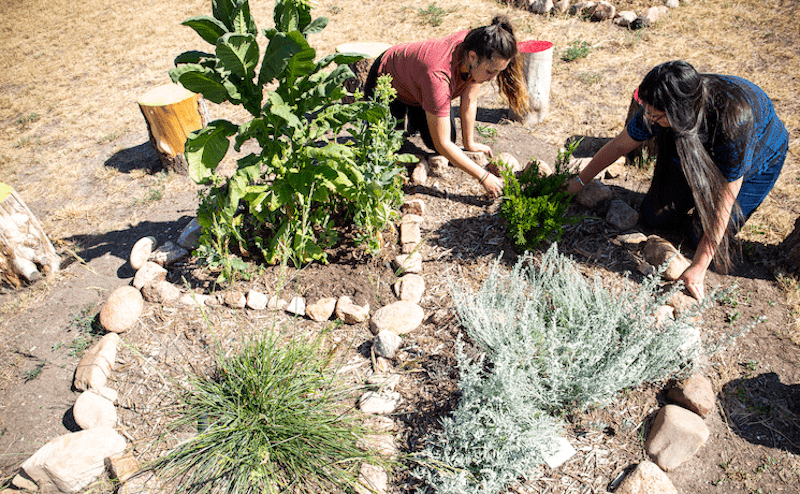Community Agriculture: Preserving Indigenous Culture
Community agriculture plays an integral role in the preservation of indigenous cultures. It forms the backbone of many societies, embodying history, tradition, and the unique relationships that communities form with their land. The practice of agriculture is intrinsically connected to culture, providing nourishment, building strong community bonds, and creating gathering places for people to connect and share knowledge. Let's explore the impact of community agriculture on indigenous cultures, focusing on specific examples, the protection of traditional farming, and the cultivation of both traditional and non-traditional crops.
The Interplay of Agriculture and Culture
Community agriculture isn't just about growing food; it's about maintaining traditions, preserving biodiversity, and fostering community. Here are five examples showcasing the inseparable connection between agriculture and indigenous cultures:
The Haudenosaunee Confederacy (Iroquois) - Three Sisters Agriculture: The Haudenosaunee communities of North America have long practiced Three Sisters agriculture, growing corn, beans, and squash together. This intercropping method is not just an efficient use of land; it's also a cornerstone of Haudenosaunee culture, symbolizing the unity and mutual support of the three sisters.
Hawaiian Taro Farming: In Hawaii, the cultivation of taro or 'kalo' is deeply intertwined with the islands' history and culture. Taro farming has nurtured the Hawaiian community by providing sustenance and fostering communal work, known as 'kōkua'.
Balinese Subak System: In Bali, the centuries-old 'subak' system of cooperative water management governs the cultivation of rice terraces. The subak system is a communal endeavor and is deeply linked to the Balinese philosophical concept of 'Tri Hita Karana', which emphasizes harmony with the divine, with others, and with nature.
Andean Potato Cultivation: For the Quechua and Aymara peoples of the Andean highlands, potato cultivation is a cultural touchstone. They preserve a wide diversity of potato species and use traditional farming techniques that demonstrate their profound understanding of the harsh Andean environment.
Māori Kūmara Growing: The Māori people of New Zealand have cultivated kūmara (sweet potato) for centuries, with the crop playing a vital role in their culture and mythology. The traditions and stories surrounding kūmara growing have been passed down through generations and continue to be an integral part of Māori culture.
Agriculture: The Pillar of a Community
Agriculture does more than just provide food for indigenous communities; it also brings people together, fostering a sense of communal identity and belonging. Shared agricultural activities, such as planting, harvesting, and processing, create spaces for social interaction and cultural exchange. These communal farming practices often result in traditional agricultural landscapes, like the Balinese subak, which become important gathering places.
Moreover, community agriculture contributes to local economies, providing livelihoods and reinforcing communal ties. It also ensures food security, promoting resilience and self-reliance within communities.
Protecting Traditional Farming
Traditional farming methods often embody a deep understanding of local ecosystems, employing sustainable practices that respect and preserve biodiversity. However, these methods are increasingly threatened by factors like industrial agriculture, climate change, and the erosion of cultural practices.
Preserving traditional farming practices is crucial. It maintains biodiversity, bolsters resilience to environmental changes, and preserves the rich cultural heritage embedded in these agricultural systems. Initiatives like the Slow Food movement's Ark of Taste and UNESCO's recognition of cultural landscapes help protect and promote traditional agricultural practices.
Growing Traditional and Non-Traditional Crops
Indigenous cultures cultivate a wide variety of crops, including both traditional and non-traditional species. Traditional crops often have cultural and historical significance and are well adapted to local conditions. Cultivating these crops preserves biodiversity and cultural traditions.
Non-traditional or introduced crops also play a role in indigenous agriculture. When integrated respectfully and sustainably into existing farming systems, these crops can contribute to food security, provide new economic opportunities, and enrich diets without undermining traditional practices or biodiversity.
Community agriculture is vital to the preservation of indigenous cultures. It nurtures the relationships between people and the land they inhabit, sustaining traditions, fostering communal ties, and providing gathering places. By protecting traditional farming practices and cultivating a diverse array of crops, indigenous communities can continue their age-old agricultural traditions while embracing new opportunities.



.png)
.png)
.png)

.png)